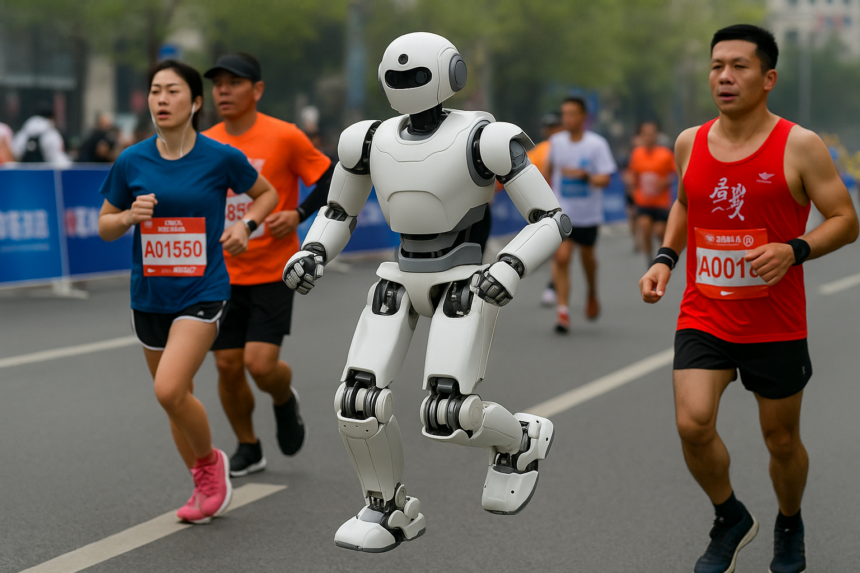In a bizarre yet thrilling event, humanoid robots and human competitors raced side-by-side in a half-marathon in China. This historic race is a testament to the growing capabilities of robotics and AI. Although the robots were no match for the top human athletes in speed, their participation in such a complex race demonstrates how advanced technology has become. The robots completed the challenging 21.1 kilometers (13.1 miles) and provided insight into the future of humanoid machines in endurance activities.
What’s Happening & Why This Matters
The streets of China were recently filled with human runners and humanoid robots competing in a race like no other. The Humanoid Robot Half-Marathon, as it’s called, saw robots powered by human operators racing alongside professional athletes. The event took place on a carefully designed route with human and robotic tracks, ensuring safety for all participants. Although the robots were not expected to beat the humans, their performance in this complex setting was impressive in its own right.
The robots faced many challenges during the race. In the early stages, one of the robots fell right at the start, struggling to get back up before continuing the race. Another robot collided with a railing, causing the operator to lose balance. Despite these challenges, the robots continued the race under the supervision of their human navigators.
The Sky Project Ultra, a robot the Tien Kung Team developed, was the fastest robot in the race. It completed the 21.1-kilometer course in 2 hours, 40 minutes, and 42 seconds, a far cry from the average human marathon time of around 2 hours. However, the robot’s achievement was notable because it demonstrated how humanoid robots develop the stamina to handle physical tasks on such a large scale.
Impact
This event was not just about speed or competition but rather about demonstrating the capabilities of humanoid robots. As robots become increasingly sophisticated, their potential applications expand beyond manufacturing into physical spaces requiring endurance, such as athletics and healthcare. This race is a perfect example of how robots could play a role in various industries, from logistics to public service.
While robots have long been used in industrial settings, this event shows that humanoid robots are now starting to engage in tasks once considered exclusively human. Robots’ participation in a marathon-style event challenges our perception of what is possible for robots in the near future. With continued advancements in AI and robotics, we could see robots not just participating in marathons but becoming integral members of society in various sectors.
TF Summary: What’s Next
The Humanoid Robot Half-Marathon was a remarkable demonstration of where robotics and AI are heading. While the robots still have a long way to go before competing with elite human athletes, their ability to complete the race, navigate obstacles, and maintain endurance speaks volumes about the progress of humanoid robotics. TF APAC expects to see more robotic competitions in the future, as humanoid robots are increasingly integrated into industries requiring physical activity, endurance, and decision-making.
Robots are becoming more integrated into both practical and recreational activities, paving the way for future technological breakthroughs in the robotics field. As technology advances, expect robots to take on even greater challenges, perhaps surpassing human capabilities in specific tasks.
— Text-to-Speech (TTS) provided by gspeech



